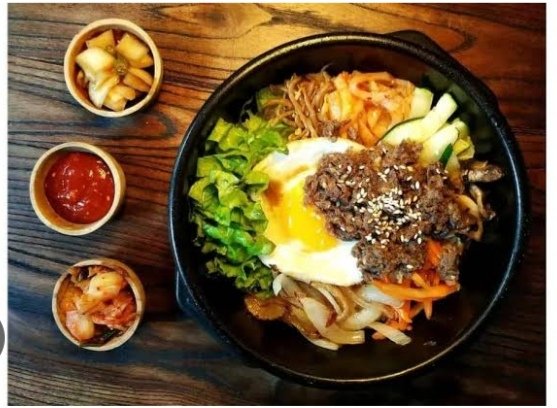Bibimbap: Exploring the Flavors of Korea's Iconic Rice Bowl

Introduction:
Korean cuisine has gained immense popularity worldwide, thanks to its vibrant flavors and unique dishes. Among them, bibimbap stands out as a quintessential Korean rice bowl that embodies a harmonious blend of colors, flavors, and textures. In this article, we delve into the fascinating world of bibimbap, uncovering its history, ingredients, preparation, and the delightful experience it offers to food enthusiasts.
Section 1: A Brief History:
Bibimbap traces its origins back to ancient times when Korean farmers sought to make the most of their leftover ingredients. The dish became prevalent during the Joseon dynasty and has since become a beloved part of Korean culinary heritage.
Section 2: Ingredients and Preparation:
Bibimbap primarily consists of a bowl of steamed rice topped with an array of colorful and nutritious ingredients. The traditional components include namul (seasoned vegetables), gochujang (spicy red pepper paste), soy sauce, sesame oil, and a protein source such as beef, chicken, tofu, or seafood. The ingredients are carefully arranged on top of the rice, creating a visually appealing dish.
Section 3: Variations and Regional Specialties:
While bibimbap's core components remain consistent, variations exist across different regions of Korea. For example, Jeonju bibimbap is known for using a wide range of ingredients, including raw beef and raw egg yolk, while the Gwangju style emphasizes the use of abundant vegetables. These regional specialties showcase the diverse culinary landscape of Korea.
Section 4: The Joy of Mixing:
What sets bibimbap apart is the interactive dining experience it offers. Before eating, the dish is typically mixed together, incorporating all the ingredients and flavors. This blending creates a symphony of tastes, with the gochujang acting as the binding element that ties everything together.
Section 5: Bibimbap Goes Global:
As Korean culture gains global recognition, bibimbap has found its way onto menus around the world. Its appeal lies not only in its delicious flavors but also in its versatility, accommodating various dietary preferences and offering a wholesome meal option.
Conclusion:
Bibimbap, with its harmonious combination of flavors, vibrant colors, and interactive dining experience, continues to captivate food enthusiasts worldwide. Whether enjoyed at a traditional Korean restaurant or prepared at home, this iconic rice bowl promises a delightful journey into the heart of Korean cuisine.
Note: This article is a fictional example and does not reflect real-world events or information.